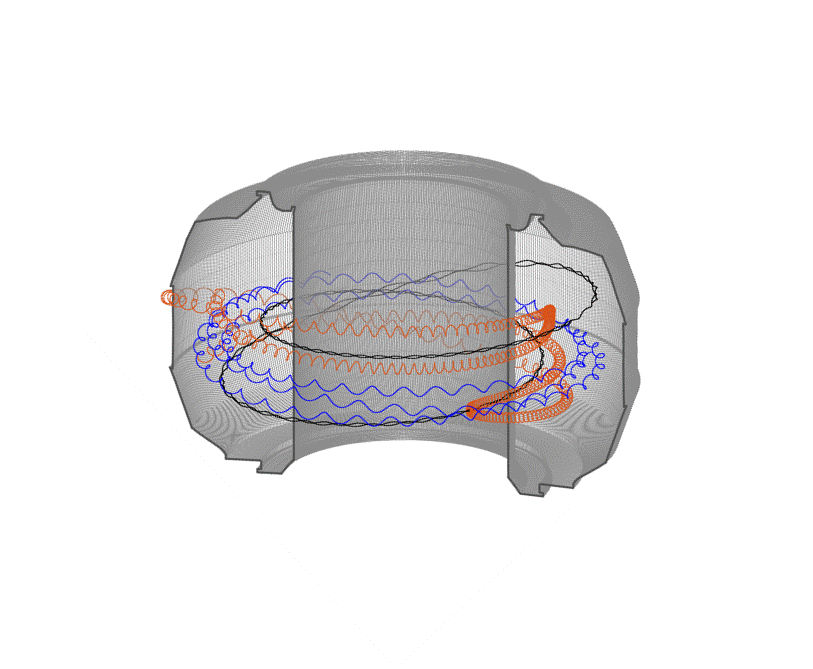
Filter News
Area of Research
- Advanced Manufacturing (2)
- Biological Systems (1)
- Biology and Environment (20)
- Clean Energy (24)
- Computational Biology (2)
- Computational Engineering (1)
- Fuel Cycle Science and Technology (1)
- Fusion and Fission (27)
- Fusion Energy (12)
- Isotope Development and Production (1)
- Isotopes (8)
- Materials (39)
- Materials for Computing (7)
- National Security (6)
- Neutron Science (14)
- Nuclear Science and Technology (38)
- Nuclear Systems Modeling, Simulation and Validation (2)
- Supercomputing (23)
News Type
News Topics
- (-) Advanced Reactors (31)
- (-) Biomedical (57)
- (-) Molten Salt (8)
- (-) Nuclear Energy (101)
- (-) Polymers (29)
- 3-D Printing/Advanced Manufacturing (116)
- Artificial Intelligence (92)
- Big Data (51)
- Bioenergy (90)
- Biology (99)
- Biotechnology (22)
- Buildings (52)
- Chemical Sciences (66)
- Clean Water (29)
- Climate Change (96)
- Composites (27)
- Computer Science (185)
- Coronavirus (45)
- Critical Materials (28)
- Cybersecurity (34)
- Decarbonization (74)
- Education (4)
- Element Discovery (1)
- Emergency (2)
- Energy Storage (103)
- Environment (184)
- Exascale Computing (37)
- Fossil Energy (6)
- Frontier (41)
- Fusion (53)
- Grid (61)
- High-Performance Computing (84)
- Hydropower (11)
- Irradiation (2)
- Isotopes (51)
- ITER (7)
- Machine Learning (46)
- Materials (136)
- Materials Science (131)
- Mathematics (9)
- Mercury (12)
- Microelectronics (4)
- Microscopy (47)
- Nanotechnology (54)
- National Security (63)
- Net Zero (13)
- Neutron Science (125)
- Partnerships (49)
- Physics (58)
- Quantum Computing (34)
- Quantum Science (67)
- Renewable Energy (2)
- Security (23)
- Simulation (47)
- Software (1)
- Space Exploration (25)
- Statistics (3)
- Summit (58)
- Sustainable Energy (122)
- Transformational Challenge Reactor (7)
- Transportation (87)
Media Contacts

Oak Ridge National Laboratory scientists analyzed more than 50 years of data showing puzzlingly inconsistent trends about corrosion of structural alloys in molten salts and found one factor mattered most—salt purity.
![Coexpression_hi-res_image[1].jpg Coexpression_hi-res_image[1].jpg](/sites/default/files/styles/list_page_thumbnail/public/Coexpression_hi-res_image%5B1%5D_0.jpg?itok=OnLe-krT)
While studying the genes in poplar trees that control callus formation, scientists at Oak Ridge National Laboratory have uncovered genetic networks at the root of tumor formation in several human cancers.

By automating the production of neptunium oxide-aluminum pellets, Oak Ridge National Laboratory scientists have eliminated a key bottleneck when producing plutonium-238 used by NASA to fuel deep space exploration.

The Department of Energy’s Oak Ridge National Laboratory is collaborating with industry on six new projects focused on advancing commercial nuclear energy technologies that offer potential improvements to current nuclear reactors and move new reactor designs closer to deployment.
![2018-P07635 BL-6 user - Univ of Guelph-6004R_sm[2].jpg 2018-P07635 BL-6 user - Univ of Guelph-6004R_sm[2].jpg](/sites/default/files/styles/list_page_thumbnail/public/2018-P07635%20BL-6%20user%20-%20Univ%20of%20Guelph-6004R_sm%5B2%5D.jpg?itok=DUdZNt_q)
A team of scientists, led by University of Guelph professor John Dutcher, are using neutrons at ORNL’s Spallation Neutron Source to unlock the secrets of natural nanoparticles that could be used to improve medicines.

Scientists from Oak Ridge National Laboratory performed a corrosion test in a neutron radiation field to support the continued development of molten salt reactors.

Carbon fiber composites—lightweight and strong—are great structural materials for automobiles, aircraft and other transportation vehicles. They consist of a polymer matrix, such as epoxy, into which reinforcing carbon fibers have been embedded. Because of differences in the mecha...

The United Kingdom’s National Nuclear Laboratory and the U.S. Department of Energy’s Oak Ridge National Laboratory have agreed to cooperate on a wide range of nuclear energy research and development efforts that leverage both organizations’ unique expertise and capabilities.

Experts focused on the future of nuclear technology will gather at Oak Ridge National Laboratory for the fourth annual Molten Salt Reactor Workshop on October 3–4.

Fusion scientists from Oak Ridge National Laboratory are studying the behavior of high-energy electrons when the plasma that generates nuclear fusion energy suddenly cools during a magnetic disruption. Fusion energy is created when hydrogen isotopes are heated to millions of degrees...


